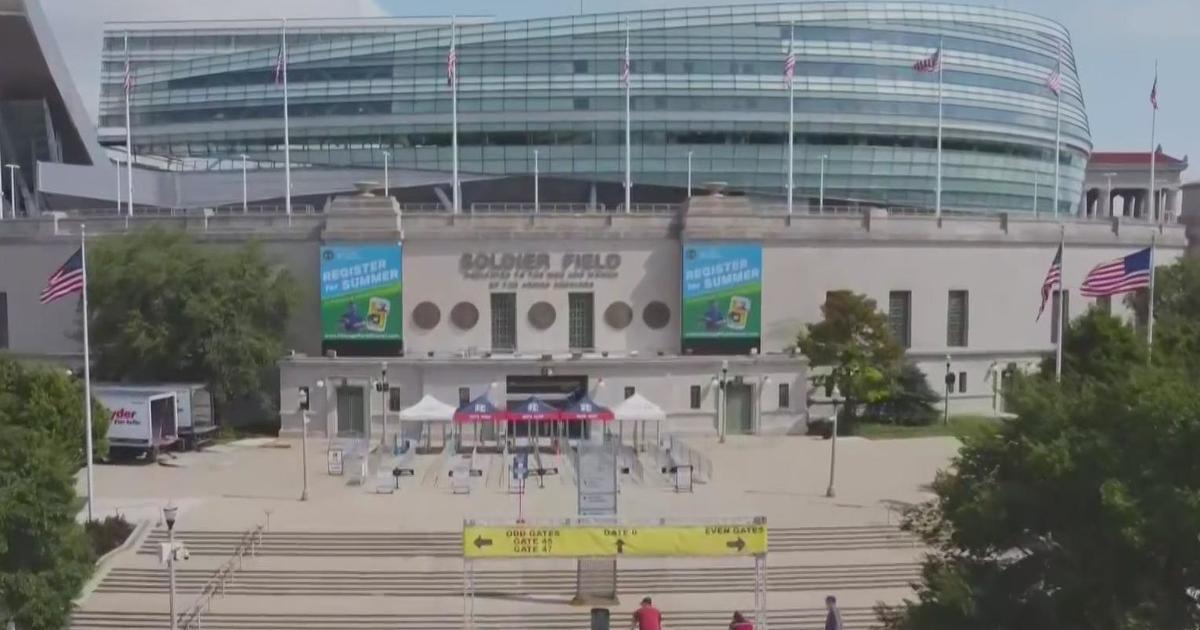North Branch Plan Would Be Fueled By Developer Fees
CHICAGO (CBS) -- Developers who build residential and retail projects in a North Branch corridor zoned to protect manufacturing would pay a fee for the privilege, under a mayoral plan that took shape this week.
City Hall has issued final guidelines for the 760 acres of land bounded by the Chicago River, Kennedy Expy., Kinzie and Wrightwood. The next step is to determine how much developers will pay for the privilege of having the shackles imposed by a planned manufacturing district (PMD) removed.
Planning and Development Commissioner David Reifman said the fees will be spelled out this summer.
The pot of money generated by those fees would be used to accomplish two goals: to bankroll roads, bridges and other infrastructure to help the North Branch corridor "transition" from heavy manufacturing to lighter uses, and to expand Chicago's still-thriving manufacturing districts, several of them on the South Side.
"If they want to do traditional manufacturing, they don't pay anything. If they want to go to a more mixed-use approach, they will have to pay an industrial corridor fee for the land that is being lost to industrial use," Reifman said Tuesday.
"If you're gonna transition away from manufacturing and do the type of mixed-use environment that the modern technology and jobs market requires, we want to create resources to support traditional manufacturing where it still exists in the city," he said.
The most immediate beneficiary of the new guidelines could be Sterling Bay.
The developer wants to build what could be a massive residential and commercial development on a 28-acre site along the Chicago River in Lincoln Park that once housed Finkl Steel.
"When you rezone, there would be a fee based on the land leaving the industrial eco-system that would go into a fund that would be available for projects elsewhere in the city," Reifman said.
"When we did the Method project . . . and the Whole Foods distribution center in Pullman, each one of those projects needed $8 million to $10 million, which we [got from] tax-increment financing. If we could get 25 acres of similar types of projects elsewhere in the city, that's the type of goal we're shooting to achieve."
Another prime beneficiary could be Riverside Investment & Development, owned by former John Buck Co. executive John O'Donnell.
The company wants to build a mix of technology office space, commercial and residential uses on the northeast corner of Chicago and Halsted on land owned by the Chicago Tribune across the street from the newspaper's Freedom Center printing plant.
In that case, the benefits to the city could be twofold.
"If they want to go higher than a 3.0 [floor area ratio], they will pay a local bonus that supports both improvements in the area and the citywide industrial support as well," Reifman said.
Yet another beneficiary would be the buyer of 18 acres of city-owned land at North and Throop that currently houses an outdated vehicle maintenance facility that will be rebuilt in Englewood. What Reifman calls a "brokered sale" is expected this summer.
Overall, Mayor Rahm Emanuel's framework plan seeks to shift the focus away from manufacturing and toward information and technology while maximizing job growth.
The goal is to triple a local job base over the next 20 years that now stands at 15,000. Only 10 percent of those jobs are in manufacturing, thanks in large part to outdated zoning that has tied developers hands and left behind large parcels of vacant land. Meanwhile, there's been a "five-fold increase" in technology jobs.
The plan also includes plans to improve transportation access by extending the wildly popular 606 trail across the Chicago River and improving bridges to Goose Island. And it would enhance "natural resources," with a wetlands park, a riverwalk and 10 additional acres of recreational space.
Although the emphasis is on unleashing the area's vast untapped development potential, Reifman said it's only because the market was already headed in that direction.
"We didn't create Finkl leaving this corridor. Finkl left this corridor. . . . Finkl is one example — not the only example. That's 25 vacant acres. We need an approach to re-use. The traditional steel manufacturing is not coming back to the North Branch area," he said.
Aldermen Brian Hopkins (2nd) and Michele Smith (43rd) lobbied long and hard for 15 acres of recreational space. They were forced to settle for 10 acres.
"The plan says up to 50 percent of the industrial corridor can be for non-employment use. There is over a 100-acre deficit of open space. We still have a way to go to ensure there is adequate and contiguous space for 350,000 residents of the surrounding community and the huge new community that's expected," Smith said.
Hopkins added, "The community asked for 15 acres of additional parkland. We got 10 and, going forward, I think there's an opportunity to capture the remaining five. It won't be in industrial corridor. But no one is gonna care if it's in a former PMD or just outside as long as we can get to 15 acres."
(Source: Sun-Times Media Wire © Chicago Sun-Times 2017. All Rights Reserved. This material may not be published, broadcast, rewritten, or redistributed.)



